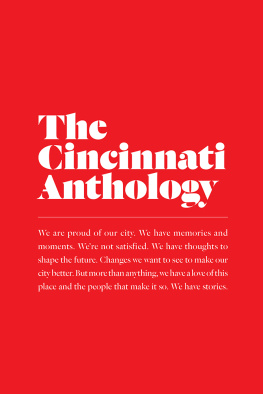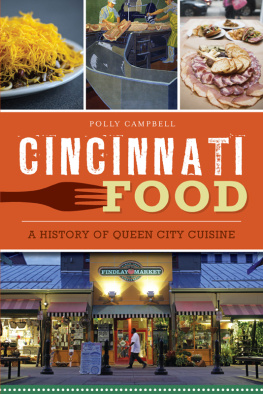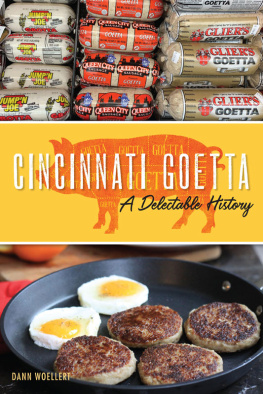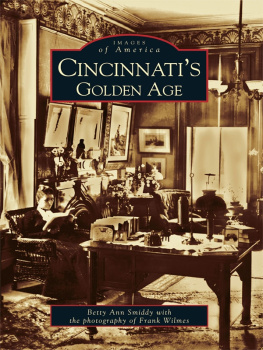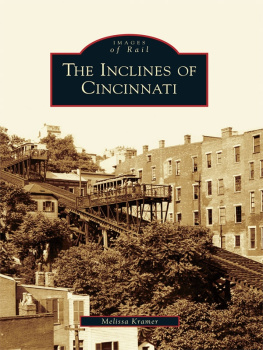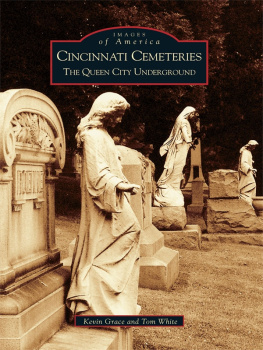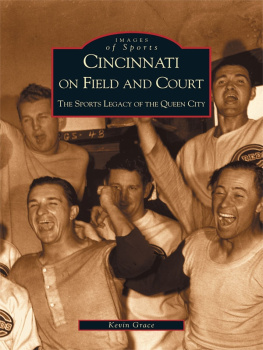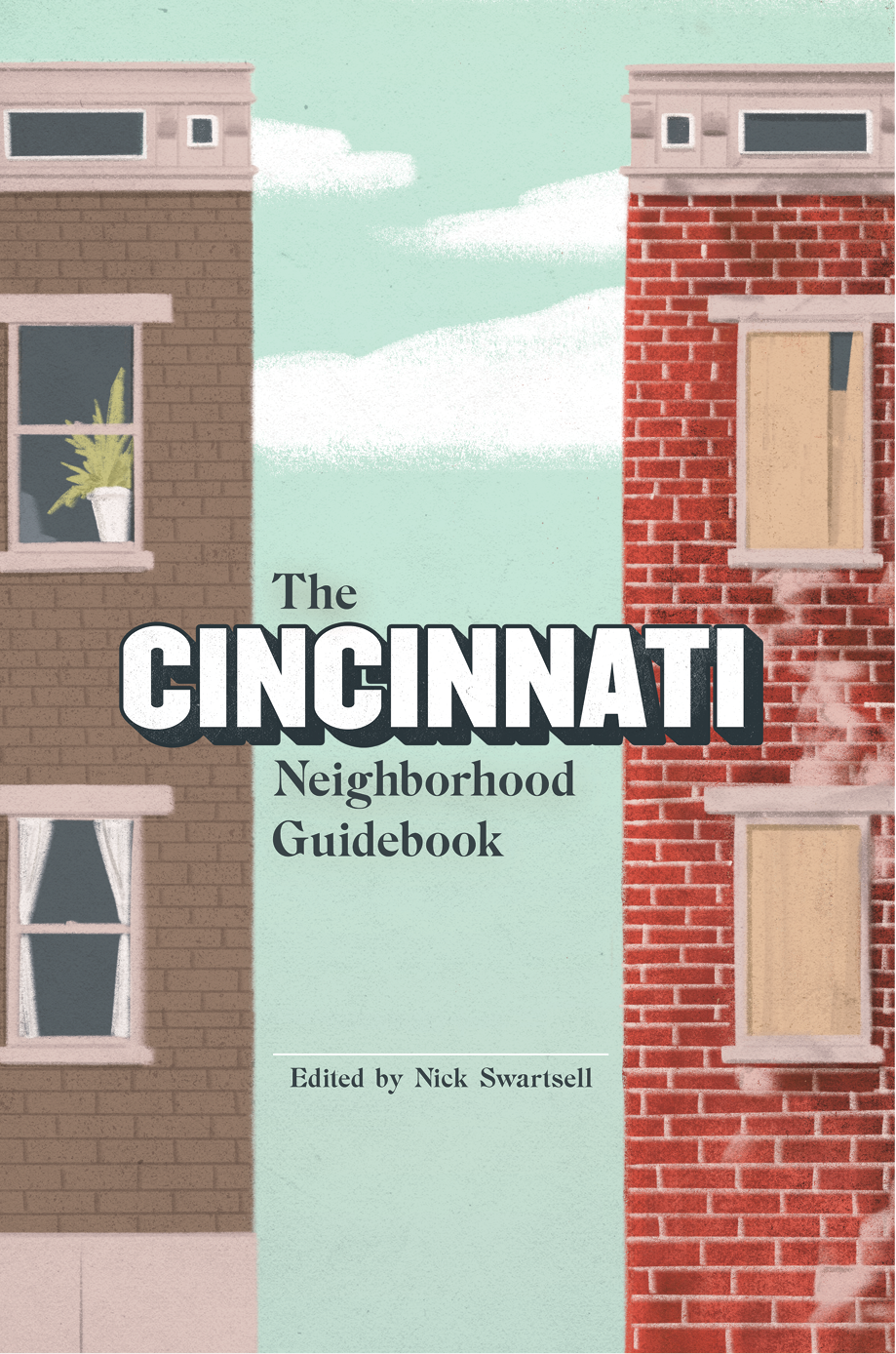Copyright 2022, Belt Publishing
All rights reserved. This book or any portion thereof may not be reproduced or used in any manner whatsoever without the express written permission of the publisher except for the use of brief quotations in a book review.
First Edition 2022
EBOOK ISBN: 978-1-953368-45-4
Belt Publishing
5322 Fleet Avenue, Cleveland, OH 44105
www.beltpublishing.com
Book design by Meredith Pangrace
Cover by David Wilson
Contents
L
Introduction
Nick Swartsell
Hello, dear reader, and thank you for picking up The Cincinnati Neighborhood Guidebook . Glad to have you along on this textual tour of the Queen City.
First, lets talk about what this book is not. You wont find profiles of the hottest neighborhoods in which to buy a home or lists of their newest bars, restaurants, and cultural amenities. Other publications do that ably and more nimbly than this tome could. By the time we get it into publication, much of that information will have changed anyway.
This slim volume is also not at all an exhaustive study of all the citys fifty-two neighborhoods, countless subneighborhoods, outlying suburbs, and other geographic points of interest. Each community has its own stories, its own fascinating character (and characters), and each one deserves to be celebrated, to be sure. But that would be a large volume, and you, dear reader, as attentive and curious as you are, would likely skip to something familiar or attention grabbing eventually.
Instead, this book is just a sampling written by those who answered the call for submissions and felt passionately that you simply must know something about the way life feelsand why it feels that wayin their communities. You will likely be able to think of communities this book should have included, and you would be right. In thinking so, you will have developed an idea for a submission the editor of some future sequel will gratefully welcome.
That leads me to the heart of the matter: this book is wonderfully and purposefully neither cohesive nor conclusive. Its a short, open-ended series of missives from very different places that are changing, and because they are changing, they are hard to freeze in time or fit together into an easy pattern. In short, they are places that are alive.
Thus, the happy job of this book is not to sum up but to complicate your understanding of Cincinnati.
I can think of nothing more fitting for this city, which sits on land once occupied by multiple groups of Indigenous people and which started out its current iteration as not one but three lonely and different settlements along the Ohio River. Even the first name for the town these settlements eventually becameLosantivilledescribes its location across from the Licking River using Greek, Latin, French, and English. A real grab bag we are here.
The name Cincinnati was an attempt by very early leaders to give this place a more unified and noble identity. But even the story of Cincinnatusthe Roman farmer who left his fields to command an army, only to refuse the reins of power when the war was overspeaks of duality and adaptability, of fluid identity.
And thats what Cincinnati is all about. Long seen as a place a decade behind the times, weve grappled with serious urban issues ahead of the rest of the nation. Corrupt leaders at the turn of the twentieth century sparked reform efforts that led to one of the first instances of council-manager municipal governance. City leaders drew up one of the United States first comprehensive municipal plans here in 1925.
Sometimes being ahead of the major issues is tragic. A decade and a half before the Black Lives Matter movement, a Cincinnati police officer shot an unarmed Black man, pushing a group of dedicated activists to win some of the nations first and most recognized modern police reforms. Those same activists are still fighting to have those reforms honored.
As I write this, a new mayor and an almost entirely new Cincinnati City Council are just warming up after a tumultuous few years for city government that featured another round of corruption scandals, battles over a number of serious issues, and not a little over-the-top political theater. Will our new elected leaders take higher roads? We shall see. Even if they do, those roads are likely to diverge.
We are a city of stories and counter-stories, where small towns atop hills and those nestled in valleys are welded together and kept separate by accident and annexation, by ancient geologic forces and grudges that feel nearly as old. Here you may think of the citys clich clashesEast Side versus West Side, Skyline versus Goldstar chili, pro- versus anti-streetcar.
But I would like to submit that these near-tectonic frictions are what keeps Cincinnati churning, evolving, and energized.
In short, all of this difference is what makes this city so alive. Here is a sampling of that lifethe tensions, the changes, the debates, the life-and-death battles, and, not least of all, the joys we share.
CENTRAL
Over-the-Rhine:
The Crossroads at Fourteenth and Vine
Michael Henson
On a bright, bitter cold day some thirty years ago, long before Over-the-Rhine had been gentrified into OTR, I watched a woman and four children gather to cross at Fourteenth and Vine. Around them were the traffic in motion on Vine, the traffic at rest on Fourteenth, the vigilant and reposed drug dealers leaning against the boarded windows of the pool hall, the walkers with their canes or their strollers or their bags of groceries. Around them all was a maze of brick and neon, signboards, walk lights, glass, vinyl, plywood, chrome, paper, asphalt, plastic, and, in the path of a passing truck, a plume of diesel smoke descending.
The corner of Fourteenth and Vine in Cincinnati was then, and still is, a busy corner. The bar on the southeast corner is still a bar, but it now serves sushi and sake. The abandoned pool hall across Vine is now a gourmet donut shop. All manner of people have come and gone across this particular intersection. But I have carried in my mind the image of this woman and these children almost photographically for all these many years.
They have stayed with me, in part, I suppose, because of a little riff of drama between the woman, who seemed tipsy, and the oldest of the children, a preadolescent girl with a proud, wary eye.
The woman was white, the children were Black, and it seemed the woman was an interloper in this scene. She looked like someones grandmother, but she did not look like theirs. And the oldest girl, who may have been twelve, was clearly in charge of these children. She had linked them, hand to hand, and lined them up at the curb like marchers in a parade. They were packed identically in bright insulated coats, hooded, bundled, and immobilized like fine china packed for shipping. They were bright-colored beauties, admirably protected and prepared for the bitter cold air of Vine Street.
But the woman was bare-handed, dressed shabbily, out of season and out of fashion in a camel-colored cloth coat with a kerchief knotted at her chin. Twenty years earlier, she would not have looked out of place, for she would have looked like many women among the thousands of white and Black Appalachian migrants who then shared this neighborhood with growing numbers of African Americans displaced from the West End. The woman reminded me of women I have seen in coal camps, in country stores, or outside storefront churches on Wednesday nights after servicesknotty, strong-minded, sharp-tongued women, hard-scrabble matriarchs, the moral and emotional centers of struggling, displaced families. They are women of great density, made solid by grief and wisdom.



